
Case Report
Austin J Dent. 2015;2(1): 1012.
Aesthetic Restoration of Maxillary Incisors with Composites: Case Report
Correia AMO1, Vieira VM1, Rocha DM2 and Mendonça AAM1*
1Department of Dentistry, Federal University of Sergipe, Aracaju, Brazil
1Department of Dentistry, Federal University of Sergipe, Lagarto, Brazil
*Corresponding author: Mendonça AAM, Departament of Dentistry , Federal University of Sergipe - UFS, Rua Claudio Batista, s/n, Bairro Santo Ant�nio, Aracaju/SE, CEP: 49060-100, Brazil
Received: September 22, 2014; Accepted: January 12, 2014; Published: January 15, 2014
Abstract
The increasing demand for esthetic restorations motivates the dentist to develop special skills and knowledge of dental restorative materials. The success in restoring teeth within the aesthetical zone results in positive effect on patient's self-esteem and quality of life. The direct composite resin layering techniques allow greater preservation of sound tooth structure than indirect restorations. The main difficulties encountered by clinicians, have involved contamination due to improper isolation, individual patient characteristics, and the provision of restorations with acceptable strength, durability, and esthetics. Composite resin has become an integral part of contemporary restorative dentistry and the material of choice for Class IV restorations due to improvements in materials, conservative concepts in restorative dentistry and clinical successes. This article shows a case report of an esthetic rehabilitation of the two maxillary incisors using composites.
Keywords: Composite resin; Class IV; Esthetic dentistry
Introduction
The increasing demand for esthetic restorations motivates the dentist to develop special skills and knowledge of dental restorative materials. Restorations in the anterior region of the mouth especially, should meet high esthetic demands [1]. It is especially the smile that influences the appearance of the face as a beautiful smile seems to convey serenity, safety, and success in the beholder [2].
The success in restoring teeth within the aesthetical zone results in positive effect on patient's self-esteem and quality of life [3]. The wishes and needs of patients have to be considered in the same way as esthetic guidelines known from the scientific literature [4].
Esthetic dentistry requires minimally invasive treatments with restorations that mimic the surrounding dentition [5-7]. The direct composite resin layering techniques allow greater preservation of sound tooth structure than indirect restorations. The main difficulties encountered by clinicians, have involved contamination due to improper isolation, individual patient characteristics, and the provision of restorations with acceptable strength, durability, and esthetics [8,9].
Composite resin has become an integral part of contemporary restorative dentistry and the material of choice for Class IV restorations due to improvements in materials, conservative concepts in restorative dentistry and clinical successes [10].
Case Report
A 25 years old male was referred to the clinic of department of dentistry of the Federal University of Sergipe presenting esthetic requests in the maxillary central incisors.
Following the medical interview and data collection of general and oral health, clinical and radiographic examinations were conducted. A photographic protocol was set for assist the planning and execution of the case.
In the clinical examination, facial aspects, smile, gingival architecture and dental characteristics were analyzed. In the right maxillary incisor, extensive carious lesion was observed with involvement of the mesial side and the all three thirds of the dental element, featuring a class IV cavity. The left maxillary incisor presented an extensive composite resin restoration showing rough aspect and color change (Figure 1). Radiographically, there was a radiolucent area on the proximal surfaces (Figure 2).
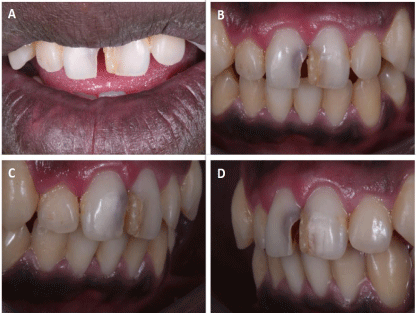
Figure 1: Initial aspect of the patient's smile. Caries lesion in the right
maxillary incisor and poor composite restoration in left maxillary incisor. A -
Smile. B- Intra-oral frontal view. C- Right side view. D- left side view.
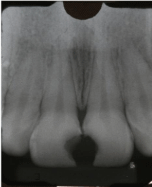
Figure 2: Radiographic aspect of radiolucent areas.
The clinical planning suggested direct composite restorations for both maxillary central incisors.
In the following appointment, the initial shade was measured with the aid of a VITA shade guide (VITAPAN Classical). Then increments of composite were placed on the buccal surface of the tooth, dentin shade composite in the cervical region and enamel shade in the middle third, to ensure the correct shade measurement.
Rubber dam isolation was performed then the restoration was removed with a diamond bur No. 1014 (KG Sorensen, Brazil) 21 and the infected dentin exposed. The infected dentin was removed with carbide bur # 6 (KG Sorensen, Brazil) at low speed (Kavo, Joinville, Santa Catarina, Brazil). A bevel on the buccal surface was made with a tapered bur No. 2200 (KG Sorensen, Brazil) (Figure 3).
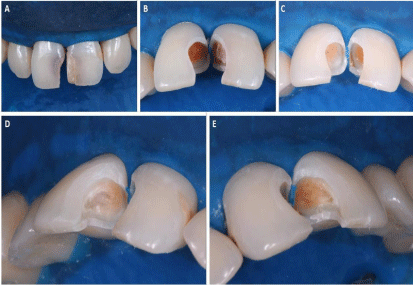
Figure 3: Rubber dam isolation. A- Frontal view. B- Caries exposure. C- End of teeth preparation. D- Teeth prepared in a left side view. E- Teeth prepared in a right side view.
Due to a thin remaining dentin, calcium hydroxide cement based (Hydro C, Dentsply, Brazil) was inserted in the pulpal wall of each element as a protective agent for the pulp-dentin complex. Glass ionomer cement (R Maxxion; FGM, Joinville, SC, Brazil) was applied over the calcium hydroxide cement, acting as cavity base (Figure 4).
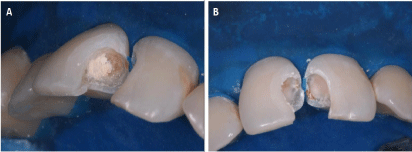
Figure 4: Pulp-Dentin complex protection. A- Calcium-Hydroxide cement. BGlass ionomer cement.
The surfaces were treated according to the total-etch technique, 37% phosphoric acid (Condac 37; FGM, Joinville, SC, Brasil) for 30 s (enamel) and 15 s (dentine), rinsed for 20s, dried by air spray and excess water was removed with absorbent paper. The adhesive (Ambar, FGM, Joinville, SC, Brazil) was applied with disposable tips (Cavibrush; FGM, Joinville, SC, Brazil), followed by air spray to evaporate the solvent and 10 s photo activation (Radii plus - SDI - Australia -1,500mW/cm2) (Figure 5).

Figure 5: A- 37% acid etching B- Adhesive system.
A polyester strip was placed between the dental elements to separate and assist in the restoration of the lingual face of both elements.
Increments of enamel shade composite AT, (Filtek Z350 XT, 3M / ESPE, St. Paul, MN, USA) were placed for rebuild the lingual enamel, first in the right incisor, and photo activated by time of 20 seconds. The same protocol was followed in the left incisor. Layers of dentin shade composite, A3D (Filtek Z350 XT, 3M / ESPE, St. Paul, MN, USA) and body shade A2B (Filtek Z350 XT, 3M / ESPE, St. Paul, MN, USA) were applied and light cured for 20 seconds. Resin effect shade BT (XT Filtek Z350, 3M / ESPE, St. Paul, MN, USA), were placed between the incisal edge and dentinal mammelons in order to reproduce translucency and opalescence of this region. An enamel shade composite A2E (XT Filtek Z350, 3M / ESPE, St. Paul, MN, USA) was placed as the last increment (Figure 6). Glycerin based gel (KY; Jonhsonn, São José dos Campos, SP, Brazil) was placed on the surface of composite resin for better conversion degree of monomers and the set was photo activated for 20 seconds. The gel was rinsed and the surface was air-dried.
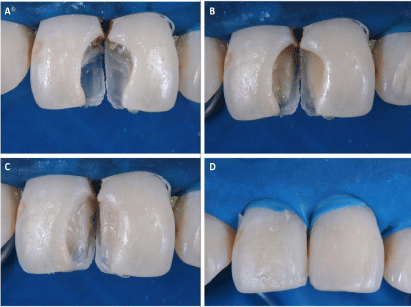
Figure 6: A- Restoring palatal enamel with an enamel composite shade AT. B- Restoring dentin with a shade A3D composite. C- Using a body composite shade A2B. D- Restoring buccal enamel with a shade A2E composite.
The rubber dam was removed, and the oclusal adjustment performed with fine and extra-fine flame-shaped diamond burs, 3168 F and 3168 FF (KG Sorensen, Brazil). Restoration's finishing and polishing were performed for dental contouring regularization; sanding discs Sof-Lex Pop-On (3M ESPE, USA) were employed followed by multilaminate burs on the buccal surface for smoothing resin. Abrasive silicone based rubbers were used for surface smoothness. Buccal characterizations (primary and secondary anatomy) were prepared with a diamond bur at high speed no 3195 (Kavo, Joinville, Santa Catarina, Brazil) (Figure 7).
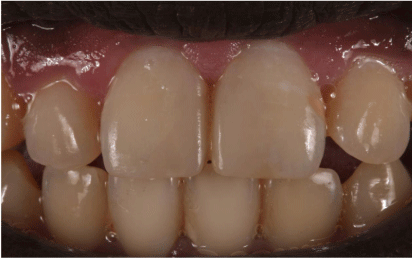
Figure 7: Final restoration after finishing and polishing.
Composites have been widely used in cosmetic procedures, due to diversity of shades and effects that allow detailing the dental structures.
In the reported case, the maxillary central incisors had inadequate restorations, besides the presence of active caries lesion compromising health, function and esthetics.
Direct restorative procedure was presented as an effective and safe alternative for oral rehabilitation. Many factors, such as planning stage, knowledge and mastery of technique and finish and polishing materials decide the success of the restorations; monitoring and maintenance ensure the treatment longevity.
Discussion/Conclusion
References
- Khashayar G, Dozic A, Kleverlaan CJ, Feilzer AJ, Roeters J. The influence of varying layer thicknesses on the color predictability of two different composite layering concepts. Dent Mater. 2014; 30: 493-498.
- Malkinsons S, Waldrop TC, Gunsolley JC, Lanning SK, Sabatini R. The effect of esthetic crown lengthening on perceptions of a patient's attractiveness, friendliness, trustworthiness, intelligence and self-confidence. J Periodontol. 2013; 84: 1126-1133.
- Davis LG, Ashworth PD, Spriggs LS. Psychological effects of aesthetic dental treatment. J Dent. 1998; 26: 547-554.
- Wolfart S, Quaas AC, Freitag S, Kropp P, Gerber WD, Kern M. Subjective and objective perception of upper incisors. J Oral Rehabil. 2006; 33: 489-495.
- LeSage BP. Aesthetic anterior composite restorations: a guide to direct placement. Dent Clin North Am. 2007; 51: 359-378.
- Ritter AV. Direct resin-based composites: current recommendations for optimal clinical results. Compend Contin Educ Dent. 2005; 26: 481-482, 484-90.
- Fortin D, Vargas MA. The spectrum of composites: new techniques and materials. J Am Dent Assoc. 2000; 131: 26-30.
- Fasbinder DJ. Restorative material options for CAD/CAM restorations. Compend Contin Educ Dent. 2002; 23: 911-916, 918, 920 passim.
- Christensen GJ. Is now the time to purchase an in-office CAD/CAM device? J Am Dent Assoc. 2006; 137: 235-236, 238.
- Donly KJ, Browning R. Class IV preparation design for microfilled and macrofilled composite resin. Pediatr Dent. 1992; 14: 34-36.